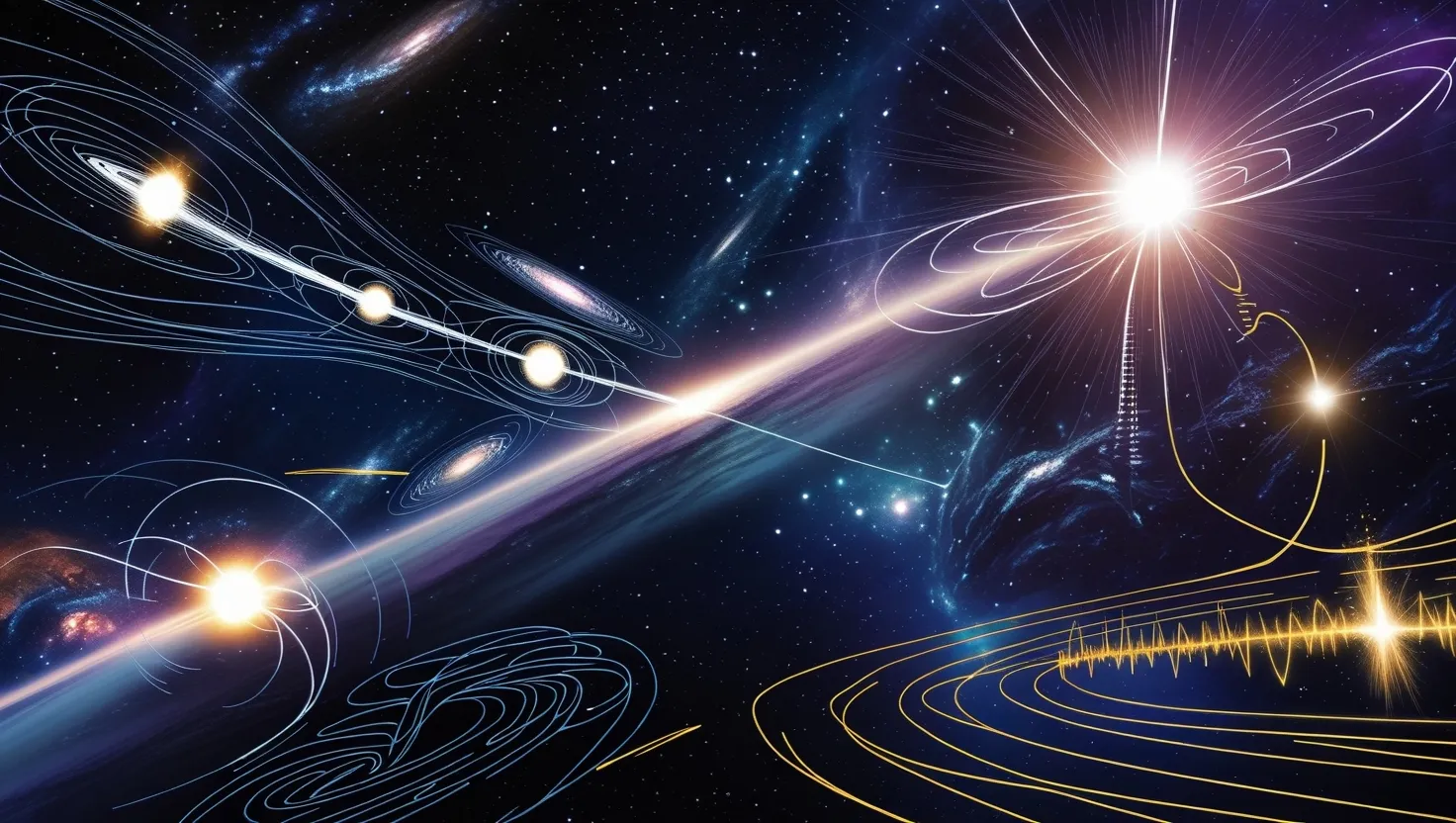Sometimes I look up into the sky and wonder how much of what I think I know about the universe might one day be proven wrong. While stars, planets, and galaxies conform to physical laws we rely on every day, there are oddities so baffling that even the world’s top physicists admit to being stumped. Today, let’s follow five particularly perplexing cosmic phenomena. Each one pushes at the limits of my imagination—and perhaps yours, too.
First, let me ask you: Have you ever heard a sound you couldn’t identify? Imagine that sensation, but on a cosmic scale—the universe itself tossing out signals that, for now, defy explanation.
Let’s begin with fast radio bursts, or FRBs. These are powerful, fleeting flashes of radio energy coming from deep space, lasting mere milliseconds. What surprises me is their power: some of these bursts release more energy in that split second than our Sun does in days. The first hint of their existence came only recently, and since then, astronomers have detected repeating bursts, single flares, and even “hyperactive” FRBs emitting dozens of flashes in an hour. Their unpredictability adds layers to the puzzle. Some burst only once, some repeat. Are they produced by colliding neutron stars, by highly magnetized neutron stars called magnetars, or by something stranger? We’ve spotted a repeating FRB in a galaxy’s outskirts, and another was traced to a magnetar. Yet the broader pattern evades clarity. What if the origin isn’t a traditional object at all, but some new kind of physical process? Theorists suggest everything from cosmic strings from the dawn of time to dark matter-induced events. Maybe the universe is more inventive than we imagine.
The great physicist Albert Einstein warned, “The most incomprehensible thing about the universe is that it is comprehensible.” But FRBs argue otherwise—they make me question the extent of that comprehensibility.
The next riddle is something cosmologists call the Hubble Tension. The idea is simple: two different ways of measuring how fast the universe is expanding give two different answers. That might sound trivial, but in physics, even tiny discrepancies can hint at vast unseen truths. Think about measuring a room with a tape measure and then with a laser, only to get two clashing results—something is off with your understanding of the tools or the room—or both. One method uses supernovae and nearby stars, while the other relies on ancient radiation from the Big Bang. These methods should agree if our grasp of cosmology is solid. But year after year, they haven’t. Could new particles, undiscovered forces, or cracks in Einstein’s theories lurk in this gap? Some say this could be a door to new physics; others urge patience, chalking up the difference to subtle measurement errors. I can’t help but wonder: Are we about to stumble into a new era of physics, or just polishing our tools for more precise work?
Pause for a moment and consider this quote from Richard Feynman: “I think nature’s imagination is so much greater than man’s, she’s never gonna let us relax.” The Hubble Tension embodies that sentiment—cosmic expansion shouldn’t be so controversial, yet here we are.
Now, picture a summer night in 1977, a radio telescope in Ohio, and an astronomer staring at an anomaly—a narrow, powerful burst of radio energy, so unusual that he scrawled “Wow!” in the margin of the printout. The Wow! Signal, as it’s now known, lasted only 72 seconds. It looked for all the world like an engineered transmission, as if some distant intelligence had reached out. Researchers have spent decades pointing powerful antennas at the same part of the sky, but never picked up another signal like it. Was it a flare from a planet’s atmosphere, a one-off cosmic glitch, a passing comet, or, dare I say, a sign of extraterrestrial technology? Its frequency matched what some had speculated would be chosen for interstellar communication, right in a quiet part of the radio spectrum. I find it fascinating that after all these years, no technical explanation has fit. The event sits in scientific limbo—a tantalizing, unresolved message that reminds me just how vast and mysterious space remains.
“What we know is a drop, what we don’t know is an ocean.” Isaac Newton’s words perfectly fit the hunt for the signal’s origin.
Then there is dark matter, which is less a single anomaly and more the backdrop to all cosmic weirdness. We see galaxies spinning so fast that, by rights, they should fling themselves apart. The glue holding them together is invisible, detected only through its gravity. Think about that—most of the matter in the cosmos is a kind of shadow, not emitting or blocking light, yet shaping everything from the smallest galaxies to the largest clusters. The puzzle goes deeper: all the atoms in stars and planets—everything we see and touch—add up to only a fraction of what’s out there. Physicists have chased candidate particles from weakly interacting massive particles (WIMPs) to exotic axions, but every supposed detection has so far faded into silence. Underground detectors have waited years for a ping, with no luck. What if dark matter is even stranger—a symphony of particles, or a misshapen remnant from a prior universe? Some speculate that its true nature will revolutionize both astrophysics and particle physics.
“Somewhere, something incredible is waiting to be known,” wrote Carl Sagan. That hope drives so many dark matter hunters, who peer into the darkness hoping to glimpse that “something incredible.”
Finally, let me guide you to the largest-scale oddity: the Great Attractor. While most of our cosmic anomalies are points or particles, this one is more like an entire region of deep space. Observations of galaxies, including our own Milky Way, reveal that they’re all drifting towards a location tens of millions of light-years away. Yet this attractor’s exact center lies behind the dense dust of our own galaxy, making it almost impossible to see directly. It has mass enough to drag thousands of galaxies toward it, but what exactly lies at its heart? Theories range from a supercluster of galaxies to vast amounts of dark matter concentrated along a filament in the universe’s structure. For me, the Great Attractor acts as a reminder of how little we can truly see—even close to home on the cosmic map.
Here, I’d like to ask: If whole galaxies, including ours, are being drawn toward an unseen mass, what else about our cosmic neighborhood flies under our radar?
If you’re wondering why these anomalies matter, let me suggest that they are both warning signals and lighthouses. They warn us that blind spots exist in even our most trusted models, and they hint at realms of knowledge untouched by present physics.
What would it mean for us if fast radio bursts are evidence of new forms of matter or technology, if the Hubble Tension opens a rift in our theories, or if dark matter reveals an invisible layer to reality? Are we at the brink of new physics, or are we about to find subtler, wiser versions of our present ideas? The hunt for answers inspires ever-more creative experiments, bigger telescopes, and sharper questions.
“If we find something we cannot understand, we ought to admit it,” said Richard Feynman, “we should leave the door to the unknown ajar.”
For anyone who gazes at the sky and wonders, I hope these cosmic anomalies serve not just as puzzles to be solved, but as invitations. The universe is full of phenomena that beg us to ask better questions, question our answers, and keep alive the thrill of the unknown. Can we ever be sure what hides in the static, what waits behind the dust, what lurks in the shadows between the stars? Sometimes, perhaps, not knowing is the greatest adventure of all.






